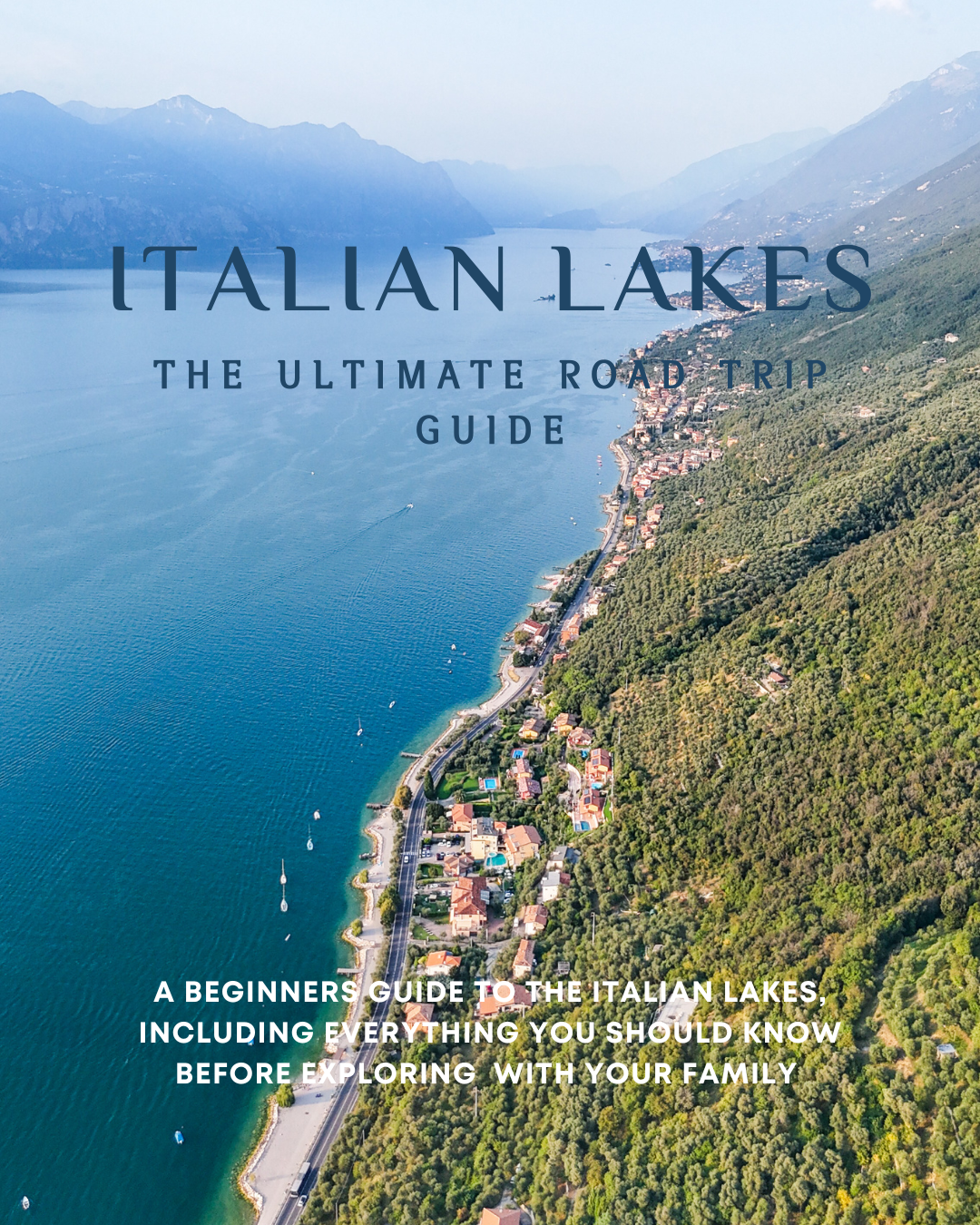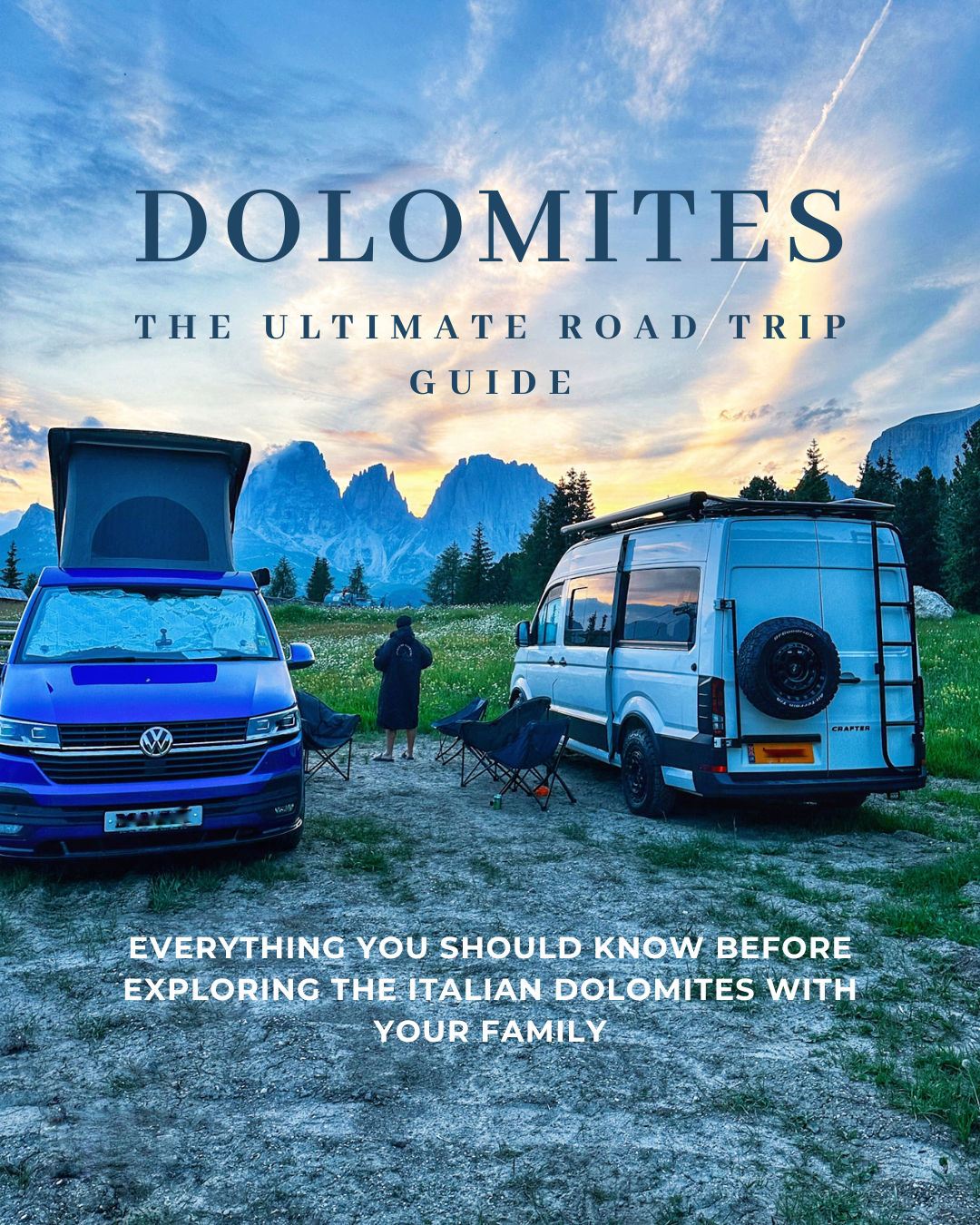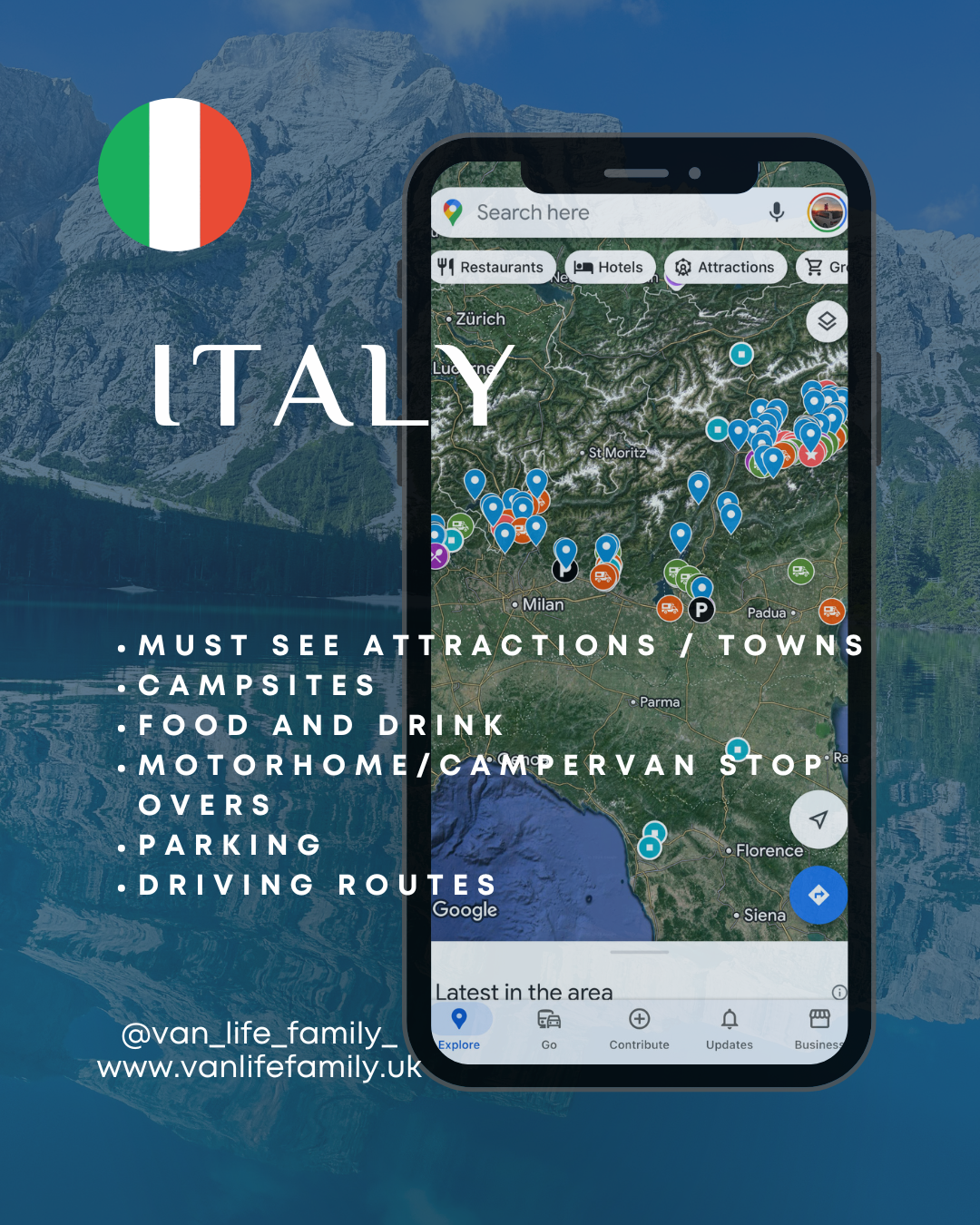Your Ultimate Guide to Road Tripping from the UK to Italy in your Campervan, or Motorhome.
Italy is an iconic destination with unforgettable road trips, spectacular scenery, diverse landscapes and a rich cultural heritage that has something for every vanlife enthusiast, no matter your travel style. Whether you're dreaming of exploring the charming coastal towns, winding through picturesque vineyards, or discovering ancient cities, Italy has it all.
In this blog, we provide all the details you need to help you get on the road for your ultimate Italian adventure. We've outlined all the essential information you need for driving in Italy, but if you're craving more inspiration for your European travels, don't miss our detailed guide to road-tripping through the stunning Italian Dolomites - it's packed with tips and insights to ensure your adventure is nothing short of spectacular. Alternatively check our our NEW Travel Guide to the Italian Lakes and be sure to explore some of our other popular posts like "Vanlife in Europe - Your Complete Guide" and "Exploring the EU with Your Dog: What Pet Owners Need to Know!" for travelling with your furry friends.
With these resources, you’ll be fully prepared to make the most of your journey across Italy and beyond!
How can I get from the UK to Italy with my campervan, or motorhome?
There are a number of ways to get to Italy from the UK. The most common way, is to cross the English channel, either via ferry or the Eurotunnel. Options include: ferries to Calais, Dunkirk, Cherbourg or Caen, or take the Eurotunnel from Folkestone to Calais. The Eurotunnel is usually more expensive, but faster (about 35 minutes), while the ferry is cheaper and takes around 90 minutes. Alternative crossings into mainland Europe include Harwich to Hook of Holland, or Hull to Rotterdam.
Once in mainland Europe (either Northern France or the Netherlands) your route to Italy really begins. If you choose to drive through Switzerland, towards Como, then the route will naturally lead you to via the Gotthard Tunnel, (or Gotthard Mountain Pass which we highly recommend if you have more time and want some epic driving scenery). Alternatively, drive via the French Toll roads and via the Tunnel du Mont-Blanc. The latter will be significantly more expensive, but you may find it is the most straight forward route.
Do I need a vignette to drive on Italian roads?
No, you do not need a vignette to drive on Italian roads. Instead of a vignette system (a prepaid sticker or permit commonly used in countries like Switzerland, Austria and Slovenia), Italy uses a pay-per-use toll system on its motorways. When you enter a toll road in Italy, you will collect a ticket from the booth and the price is calculated based on the distance you travel. You pay the toll at a toll booth when you exit the motorway, either in cash or by debit/credit card. You may wish to note that the toll roads around the Italian cities are often a set price, so you might not need to collect a ticket first, but instead pay at the first booth. Also occasionally a barrier is already up, but you still need to collect a ticket as you drive through, or you’ll be caught out at the next toll station. Tolls in Italy are more expensive than Spain, but much cheaper than France. Italy also offers the Telepass system, an electronic toll collection device that allows for seamless travel through toll booths without stopping. This can be convenient if you plan to travel extensively on the Autostrade. These are indicated with the yellow signage and marked T (as shown below).
When is the best time to visit Italy in your campervan?
Guide books suggest that Spring (April - June) is the best time to visit Italy - that campsites will start to reopen from mid April, the weather will be warming up, the landscapes will look lush and it will be less crowded than in peak summer months. This time is perfect for exploring cities, hiking in the countryside, or relaxing on the coast. Just be aware that from our personal experience, several of the sites in the coastal areas of the south in particular seem to remain closed in the spring - working towards beginning their season in June.
If you are a vanlife family with children in school, you might not be able to visit until July, or August and these are still great months to visit Italy! You just need to be prepared for the heat, so check out ‘5 Smart Ways to Keep Your Campervan Cool this Summer’. Generally the South of Italy will be even hotter than the North. If you travel during this time, consider visiting less touristy areas, mountain regions, or the lakes where you can cool off at the end of each day. If you are visiting a city or town, ensure that you arrive as early as possible. Everywhere will be busy with locals early in the morning, but you will avoid the potentially scorching temperatures and siesta closures.
Autumn is another excellent time to visit (September - October). The weather is still warm, especially in the south, and the summer crowds have dispersed. It's also harvest season, making it a great time to explore Italy’s food and wine regions.
Visiting Italy between the months of November - March, will give you a completely different experience. Winter is quieter outside of the Christmas and New Year period. While the temperatures in Southern Italy remain relatively mild, northern regions may see snow, making a visit ideal for skiing trips in the Alps or Apennines. Please be aware that most mountain passes will be closed during these months, due to snow fall and most campsites will be closed.
Is it safe to travel to Italy in my campervan?
While Italy is a generally safe country, campervan and motorhome owners should always be vigilant about potential risks. Opportunists, petty theft and break-ins can occur, especially in busy cities or tourist hotspots. Check out these campervan safety tips to minimize risk.
Invest in a high-quality steering wheel lock, alarm system, and GPS tracker.
Park in well-lit, secure areas or designated campsites whenever possible and use public transport if possible.
Use window blinds or curtains to keep valuables out of sight.
Keep essential documents and valuables in a safe, hidden location or take them with you.
Italian drivers may have a bit of a reputation, but it’s mostly because they’re spirited, confident and like to use their horns a bit more than you might be used to! While they can seem a little impatient at times, they're simply passionate about keeping traffic moving. Stick to the right lane unless you’re overtaking, as this keeps traffic flowing smoothly, use your indicators clearly and give other drivers plenty of notice before changing lanes, stay calm and patient - embrace the adventure and go with the flow! Try to avoid being startled by frequent horn honking; it's often just a friendly nudge to keep things moving along. Once you get used to the lively Italian driving style, you might even find it adds a bit of excitement to your journey!
Can you wild camp in a campervan in Italy?
While wild camping in a campervan is generally not permitted in Italy, it is often tolerated, especially in less busy areas/seasons. Finding a suitable spot can be more challenging during the peak season, but there are still plenty of ways to enjoy the freedom of the open road by using designated camper stops or campsites. Always be aware of local regulations and respect the environment to ensure the best experience on your Italian road trip adventure! For a more flexible option, you can use Italy's Aires, known as *Sostas*. These stops sometimes require a small fee, which might be paid through a ticket machine but Sostas do have the advantage of not needing to be booked in advance and often have good facilities. Apps like Park4Night can help you locate them and find the best places to stay along your route. Park4night is probably the most talked about and used app by vanlifers across the UK, Europe and the world, but if you are new to vanlife you might not have heard about it; or maybe you have heard of it but haven’t yet figured out how best to use it. If so, check out this comprehensive, downloadable PDF guide with everything you need to know, ensuring you get the best from this great app.
How can I prepare my motorhome, or campervan for a road trip to Italy?
Before setting off on your adventure, make sure you have all the necessary documents and ensure your campervan or motorhome is in top condition for the road trip ahead.
Before embarking on a big road trip, it is worth giving your van a full service. Check the engine oil, coolant, brake fluid etc
Inspect your tires for any signs of wear or damage and ensure they are properly inflated, including the spare tire. Consider carrying a tyre repair kit or a portable air compressor.
Ensure your brakes are functioning correctly and are in excellent working condition especially if you intend driving on any mountain passes.
If you are travelling to Italy from the UK, your passport must have a ‘expiry date’ at least 3 months after the day you plan to leave, plus it must not have an ‘date of issue’ less than 10 years before the date you arrive – if you renewed your passport before 1 October 2018, it may have a date of issue that is more than 10 years ago.
A UK driving license is valid in all European Union countries, including Italy. If you're planning to drive outside the EU, consider obtaining an International Driving Permit (IDP).
Make sure your motorhome or campervan insurance covers you for driving in Europe. Also consider European breakdown coverage.
Carry your vehicle’s V5C logbook and proof of insurance. You can find more details about the documents you need here.










